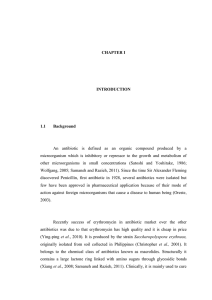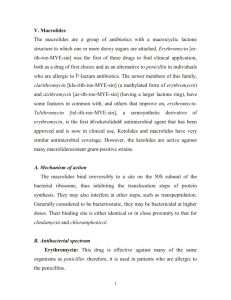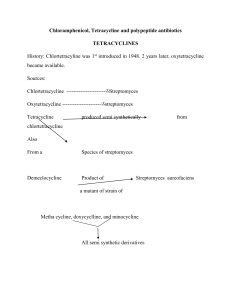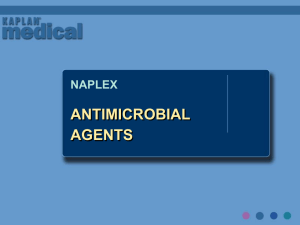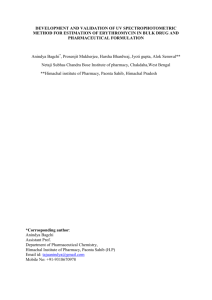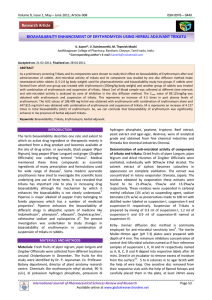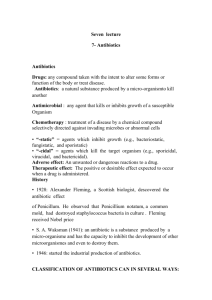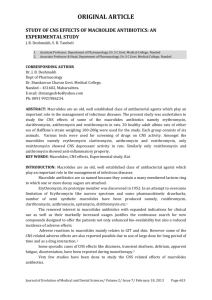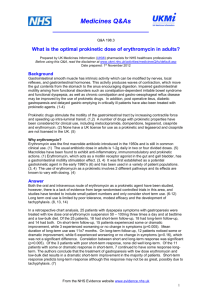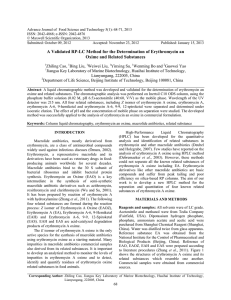Macrolides
advertisement
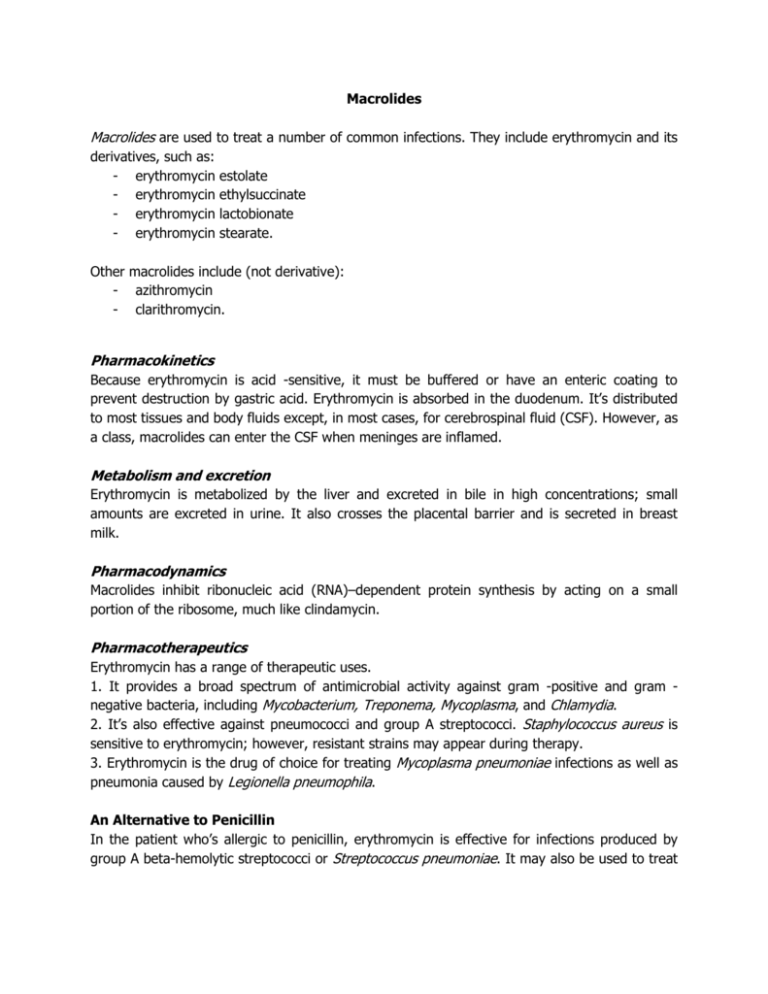
Macrolides Macrolides are used to treat a number of common infections. They include erythromycin and its derivatives, such as: - erythromycin - erythromycin - erythromycin - erythromycin estolate ethylsuccinate lactobionate stearate. Other macrolides include (not derivative): - azithromycin - clarithromycin. Pharmacokinetics Because erythromycin is acid -sensitive, it must be buffered or have an enteric coating to prevent destruction by gastric acid. Erythromycin is absorbed in the duodenum. It’s distributed to most tissues and body fluids except, in most cases, for cerebrospinal fluid (CSF). However, as a class, macrolides can enter the CSF when meninges are inflamed. Metabolism and excretion Erythromycin is metabolized by the liver and excreted in bile in high concentrations; small amounts are excreted in urine. It also crosses the placental barrier and is secreted in breast milk. Pharmacodynamics Macrolides inhibit ribonucleic acid (RNA)–dependent protein synthesis by acting on a small portion of the ribosome, much like clindamycin. Pharmacotherapeutics Erythromycin has a range of therapeutic uses. 1. It provides a broad spectrum of antimicrobial activity against gram -positive and gram negative bacteria, including Mycobacterium, Treponema, Mycoplasma, and Chlamydia. 2. It’s also effective against pneumococci and group A streptococci. Staphylococcus aureus is sensitive to erythromycin; however, resistant strains may appear during therapy. 3. Erythromycin is the drug of choice for treating Mycoplasma pneumoniae infections as well as pneumonia caused by Legionella pneumophila. An Alternative to Penicillin In the patient who’s allergic to penicillin, erythromycin is effective for infections produced by group A beta-hemolytic streptococci or Streptococcus pneumoniae. It may also be used to treat gonorrhea and syphilis in the patient who can’t tolerate penicillin G or the tetracyclines. Erythromycin may also be used to treat minor staphylococcal infections of the skin. Azithromycin provides a broad spectrum of antimicrobial activity against gram –positive and gram -negative bacteria, including Mycobacterium, S. aureus, Haemophilus influenzae, Moraxella catarrhalis , and Chlamydia. It’s also effective against pneumococci and groups C, F, and G streptococci. Clarithromycin is a broad -spectrum antibacterial that’s active against gram –positive aerobes, such as S. aureus, S. pneumoniae, and Streptococcus pyogenes; gram –negative aerobes, such as H. influenzae and M. catarrhalis; and other aerobes such as M. pneumoniae. Clarithromycin has also been used in combination with antacids, histamine -2 blockers, and proton pump inhibitors to treat Helicobacter pylori–induced duodenal ulcer disease. Drug Interactions Macrolides may interact with these drugs. - Erythromycin, azithromycin, and clarithromycin can increase theophylline levels in the patient receiving high dosages of theophylline, increasing the risk of theophylline toxicity. - Clarithromycin may increase the concentration of carbamazepine when used together. Adverse Reactions to Macrolides Erythromycin produces few adverse effects, which may include: - epigastric distress - nausea and vomiting - diarrhea (especially with large doses) - rash - fever - eosinophilia (an increase in the number of eosinophils, a type of white blood cell) anaphylaxis.
